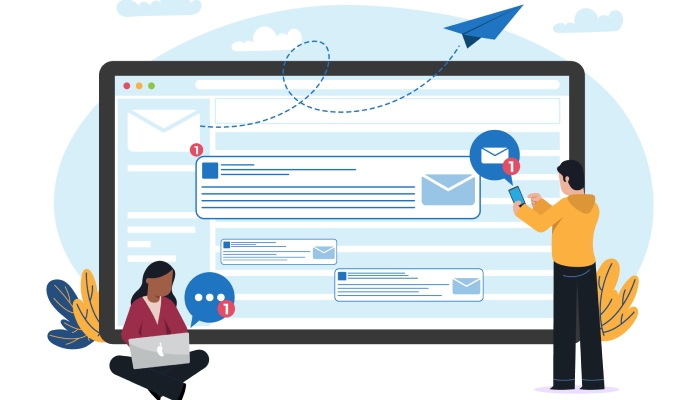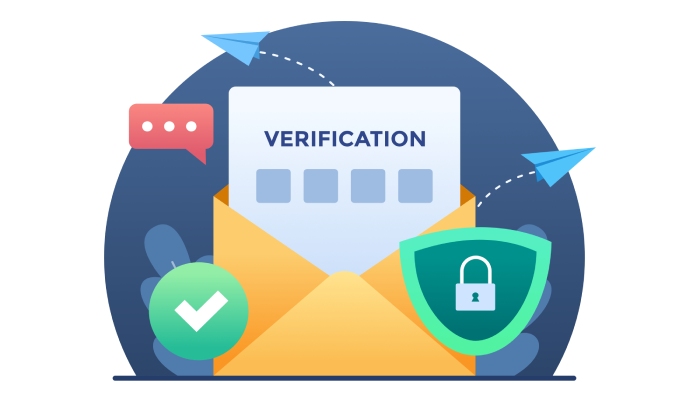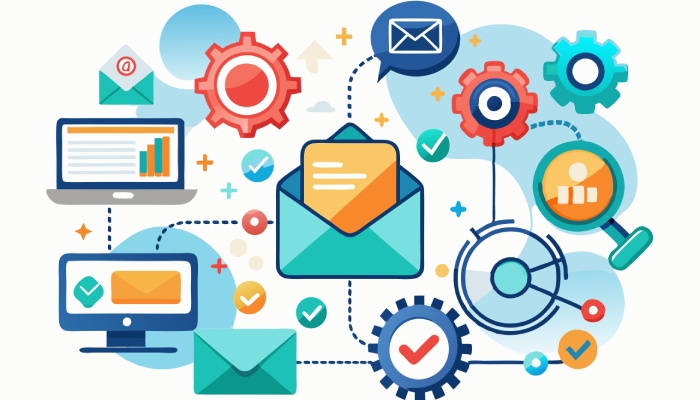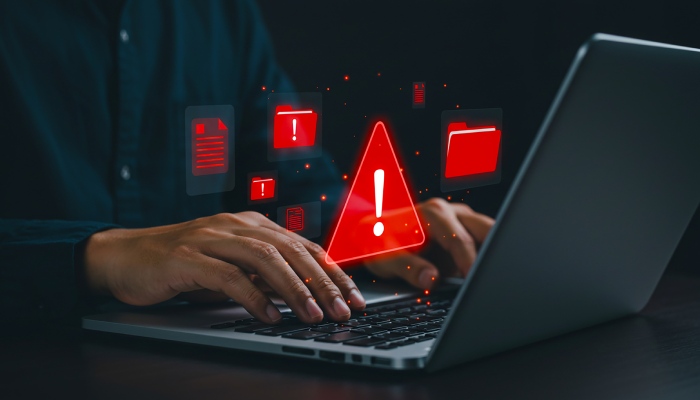The Complete Guide On How To Warm Up Your Email Domain For Cold Emails
Warming up your email domain is the secret weapon behind successful cold email outreach. Without proper warm-up, even the best-written emails can land in spam, damaging your sender reputation. By gradually building trust with inbox providers, you boost deliverability and ensure your messages actually get seen. In this guide, you’ll learn the right steps, tools, and timelines to warm up your domain safely. Let’s set the foundation to make your cold email campaigns perform like a pro.
Understanding Email Domain Warming: What It Is and Why It Matters
Email domain warm up is the strategic process of gradually building the reputation of a new or dormant email domain by incrementally increasing its email sending volume over a defined period. This phased approach is critical when launching cold outreach campaigns, as Internet Service Providers (ISPs) like Gmail, Yahoo, Microsoft 365, and Outlook actively monitor new domains for suspicious activity. Proper domain warm-up helps establish a trustworthy sender reputation and prevents outbound messages from being flagged by spam filters.
At the core of the domain warm-up process is the goal to achieve optimal email deliverability. ISPs and email service providers (ESPs) such as Zoho, GoDaddy, BlueHost, RackSpace, Yandex.mail, and HostGator use sophisticated algorithms that track your sending history, inbox engagement, and overall domain reputation. By methodically ramping up your sending frequency and volume, you demonstrate to these providers that your email activity is both legitimate and wanted, minimizing the risks of blacklisting or compromised inbox placement.

The Risks of Sending Cold Emails Without Warming Up Your Domain
Jumping into cold outreach with a fresh domain or new IP address, without following the domain warm-up process, is a recipe for disaster. A sudden surge in outbound emails to unverified recipients can immediately raise red flags among ISPs and ESPs. This leads to several detrimental consequences for your outreach efforts:
Increased Spam Filter Triggers
Spam filters are designed to flag suspicious email activity, especially when a new domain sends high volumes of unsolicited messages. Without warming up your domain, your emails are far more likely to bypass the inbox and land in the spam folder—or get blocked outright.
Damaged Domain and IP Reputation
A poor sender reputation, reflected in metrics like sender score, can result from a high bounce rate, significant spam reports, and low engagement rates. These negative signals travel quickly across ESPs, diminishing your domain reputation and IP reputation, and can even lead to domain blacklisting.
Lower Deliverability and Engagement Metrics
Without an established sending history, your campaigns will experience diminished email deliverability, delivering fewer messages to intended inboxes. This will also depress your open rate, reply rate, replies and clicks, and overall engagement rate, ultimately impeding your cold outreach objectives.
Increased Exposure to Blacklists
Major blacklists monitor email activity globally. Failing to warm up your domain greatly increases your risk of being listed, making it much harder for brands to successfully execute marketing campaigns or transactional emails—even after cleaning up their act.

Choosing the Right Email Service Provider and Domain Setup
Selecting a Reputable ESP
Choosing the best email service provider is an essential foundation for any domain warm-up process. Mainstream ESPs such as Gmail, Outlook, Microsoft 365, Zoho, GoDaddy, Amazon SES, Mailgun, SendGrid, Proton Mail, and Sendpost all have varying sending limits, email infrastructure, and built-in levels of deliverability assurance. Opt for a provider with robust support for email authentication standards, tracking, and sender health monitoring tools.
Optimizing Domain and Subdomain Usage
For cold email outreach, it’s considered email best practice to use an outreach subdomain rather than your primary root domain. This approach protects your primary brand reputation and enables reputation isolation, minimizing risk to critical transactional or internal communications. For example, use sales.yourdomain.com for cold outreach while maintaining your main domain for core business emails.
Additionally, consider establishing email authentication records on both your root domain and subdomain, using SPF, DKIM, and DMARC protocols. This not only satisfies major ISP requirements but also builds trust with filtering systems during the domain warm-up process.
Step-by-Step Process to Prepare a New Domain for Cold Outreach
To facilitate a successful domain warm-up process, follow this structured approach:
1. Configure Email Authentication
Set up SPF, DKIM, and DMARC records for your chosen domain and subdomains. Proper email authentication validates your identity as a sender and supports inbox placement by building trust with ISPs. Inconsistencies in email authentication can trigger spam filters and erode sender reputation.
2. Choose Dedicated IP or Shared IP Wisely
A dedicated IP can offer more control over sender reputation if managed correctly but requires additional responsibility in maintaining high standards. Beginners may benefit from reputable ESPs that offer high-quality shared IP pools that have a positive sending history.
3. Prepare Infrastructure and Settings
- Verify domain ownership with your provider.
- Set mailboxes and display names clearly (avoid spammy language).
- Set up a professional footer with compliance details.
- Test inbox placement using tools like Google Postmaster Tools and Microsoft SNDS.
4. Segment and Clean Your Contact Lists
Ensure all outreach goes to a clean email list of engaged contacts. Remove inactive emails and invalid addresses to lower bounce rate and improve engagement rate. Using a warm-up tool or email validation service can automate warm-up and flag risky addresses prior to delivery.
5. Initiate the Gradual Ramp-Up
During the initial phase, send a low volume of emails (10–30/day) to highly engaged contacts—preferably colleagues or self-owned mailboxes across multiple providers (e.g., Gmail, Yahoo, Outlook). Focus on maximizing open rate, reply rate, and generating replies and clicks, which are strong positive signals. Tools like Nureply can also help automate warm-up interactions and improve overall engagement during this stage.
- Avoid spammy language.
- Personalize emails.
- Monitor sender health metrics closely with Google Postmaster Tools or similar platforms.

6. Monitor Sender Score and Health
Closely track bounce rate, spam reports, unsubscribe rate, and reply rate throughout the domain warm-up process. Adjust sending practices if negative signals arise. Tools like Warmup Inbox can help automate these processes and provide additional reporting on sender reputation.
7. Adjust Based on Feedback
If you encounter any blacklists or see a significant rise in bounce rate or spam reports, pause and revisit your phased warm-up schedule. Risk management is essential for reputation isolation and long-term domain health.
Establishing a Sending Schedule: Volume, Frequency, and Ramp-Up Strategy
Determining Sending Limits and Scaling Up
Every email service provider enforces specific sending limits for new domains. Familiarize yourself with these constraints, as exceeding them can harm your sender reputation. The safest way to improve email deliverability is to gradually increase volume over a 2-6 week period. Begin by sending 10-30 emails per day and double the volume only after ensuring high inbox engagement and low bounce rates.
Phased Warm-Up Schedule for Maximum Deliverability
- Week 1-2: Focus on manual, highly personalized emails to engaged contacts.
- Week 3: Slowly add more contacts and begin automating outreach with a carefully monitored warm-up tool.
- Week 4 and Beyond: Gradually increase volume and frequency, aiming for hundreds per day based on established sender health.
Maintain consistency in sending, as erratic email activity history can trigger spam filters. Ensure emails are personalized, avoid spammy language, and monitor all relevant metrics (reply rate, open rate, engagement rate, and unsubscribe rate) to optimize your domain reputation.
Monitoring, Tools, and Optimization
- Use Google Postmaster Tools and Microsoft SNDS to track inbox placement and sender reputation.
- Regularly assess sender score and verify that SPF, DKIM, and DMARC records are still properly configured.
- Continue to maintain a clean email list and adjust your email content quality as your cold outreach scales.
Adhering to a structured, phased warm-up process, leveraging the right ESPs, and implementing robust email authentication mechanisms are the pillars of a high-impact, compliant cold email campaign that maximizes both deliverability and sender reputation.

Crafting High-Quality Initial Emails to Build a Good Reputation
The Role of Email Quality in the Domain Warm-Up Process
Sending high-quality, personalized emails is an essential step during your email domain warm up. ISPs such as Gmail, Outlook, and Yahoo use complex spam filters that assess both technical email authentication (SPF, DKIM, DMARC) and the content of your emails. Starting with strong email content can set a positive tone for your sender reputation, building trust from your very first messages.
Personalize Emails for Engaged Contacts
Focusing your initial emails on engaged contacts significantly boosts open rate, engagement rate, and reply rate. Personalizing emails—by addressing recipients by name or referencing prior interactions—signals to ISPs and ESPs like SendGrid, Mailgun, Sendpost, or Amazon SES that your sending behavior is legitimate. This helps maximize inbox placement instead of getting flagged by spam filters.
Avoid Spammy Language and Formatting
It’s critical to avoid spammy language during the domain warm-up process. Excessive use of capital letters, exclamation marks, or “too good to be true” offers often triggers spam filters. Instead, prioritize clarity, concise value propositions, and clean HTML formatting.
Balance Transactional and Outreach Emails
Mixing transactional emails (such as confirmations or notifications) with early marketing campaigns and cold outreach ensures a more natural email activity history. Most ESPs, including Microsoft 365, Zoho, and Proton Mail, prefer this blend during a phased warm-up schedule, as it resembles authentic business communication.
Encourage Genuine Engagement (Replies and Clicks)
Prompting recipients to reply or click links within your emails increases inbox engagement. High engagement metrics, such as reply rate and click-throughs, are interpreted positively by domain reputation algorithms used by Google Postmaster Tools and similar systems.

Monitoring Email Deliverability Metrics and Performance
Key Metrics for Evaluating Warm-Up Success
Constant monitoring of your sender health and email deliverability is mandatory throughout the email domain warm up. Effective domain warm-up process management involves tracking metrics via Google Postmaster Tools, Microsoft SNDS, or built-in ESP dashboards.
Open Rate, Click Rate, and Reply Rate
Monitor open rates, click rates, and reply rates closely—these are direct indicators of your content quality and engagement level with recipients. A consistent upward trajectory confirms trust building with ISPs and improved sender reputation.
Bounce Rate and Spam Reports
A high bounce rate can hurt your IP reputation and domain reputation, signaling to spam filters that you may be mailing to invalid addresses or inactive emails. Minimize bounce rate by maintaining a clean email list, rigorously removing or verifying contacts before and during the warm-up. Likewise, promptly address any spam reports or high unsubscribe rates to avoid getting listed on blacklists.
Unsubscribe Rate and Inbox Placement
A consistent unsubscribe rate that doesn’t spike suddenly is essential for sender score and reputation management. Monitoring inbox placement, particularly across ESPs like Gmail, Outlook, and AOL, lets you know if emails are arriving in the primary inbox, promotions folder, or spam.
Monitor Blacklists and Sender Score
Regularly check if your domain or IP is on blacklists using tools such as MXToolBox, and monitor your sender score. Early warnings help prevent domain blacklisting and provide cues to revisit your sending practices or warm-up strategy.

Common Mistakes to Avoid While Warming Up Your Email Domain
Skipping or Rushing the Gradual Ramp-Up
One of the most frequent mistakes is neglecting to gradually increase volume or compressing the phased warm-up schedule. ISPs and ESPs require a progressive, consistent increase in sending volume for trust building; abrupt spikes can hurt your deliverability and harm both domain reputation and IP reputation.
Ignoring Email Authentication Records
Failing to properly set up email authentication protocols (SPF, DKIM, DMARC) undermines your sender reputation. These records are checked by all major ISPs and some hosting providers (GoDaddy, BlueHost, HostGator, DreamHost, RackSpace). Missing or misconfigured email authentication is a leading cause of blocked or junked emails.
Sending to Unverified or Inactive Emails
Using old lists, or sending to large batches of inactive or invalid addresses, quickly inflates your bounce rate and signals poor list hygiene to spam filters. Always warm up with a clean email list targeting engaged contacts.
Overlooking Replies and Engagement
Another major mistake is not optimizing for replies and clicks. Failure to encourage two-way interaction can lower your engagement rate and harm your sender score on platforms like Gmail, Yandex.mail, or Zoho.
Lack of Consistency in Sending
Consistency in sending—both in timing and volume—is key to a successful domain warm-up process. Irregular sending patterns can alert ISPs to potential risks, damaging your sender reputation.

Using Automation and Email Warm-Up Tools: Pros and Cons
Benefits of Using a Warm-Up Tool to Automate Warm-Up
Time and Resource Efficiency
Automated warm-up tools such as Warmup Inbox, Mailwarm, or features within SendGrid and Mailgun simplify the process and save time. These tools can schedule your phased warm-up, rotate between subdomains, and gradually increase volume, all while ensuring best practices.
Risk Management and Error Reduction
Automation minimizes the risk of human error—such as breaching sending limits or missing a step in email authentication. Many tools also simulate replies, open emails, and monitor engagement, directly enhancing sender reputation and domain reputation.
Limitations and Risks of Automation
Reduced Personalization
While automation accelerates the domain warm-up process, it may not fully personalize emails or optimize for genuine engagement compared to manual outreach. Relying too much on automation can result in low inbox engagement if the process is not monitored closely.
Need for Ongoing Monitoring
Automated tools don’t eliminate the need to monitor sender health, bounce rates, and inbox placement via ESP analytics or Google Postmaster Tools. Manual oversight is still critical for identifying anomalies like escalating spam reports or blacklists.
Cost Considerations
Some advanced automation solutions may entail premium costs, especially for multi-domain or high-volume needs. Businesses must weigh these expenses against the efficiency gains of automating domain warm-ups.
Use Cases: When to Automate, When to Not
Automate the email domain warm up for scalability or when managing multiple accounts, but be hands-on initially for reputation isolation, risk management, and reputation building, especially if using a new dedicated IP or outreach subdomain.

Maintaining a Healthy Sender Reputation After Warming Up
Continue Best Practices Beyond Warm-Up
Reputation management does not end with the completion of the domain warm-up process. Maintain consistency in sending, use authenticated subdomains for different campaigns, and stick to a clean email list policy for all future marketing campaigns, transactional emails, or cold outreach.
Monitor Sender Health and Reputation Metrics
Keep observing deliverability metrics through Google Postmaster Tools, Microsoft SNDS, and ESP dashboards to ensure ongoing compliance with ISP standards. Regularly review bounce rate, open rate, unsubscribe rate, engagement rate, and monitor blacklists.
Practicing Email Best Practices Consistently
Continue to personalize emails, optimize for replies and clicks, and avoid spammy language. Periodic audits of your email authentication (SPF, DKIM, DMARC) records and scaling your email volume responsibly will sustain and strengthen your sender reputation and domain reputation.
Ongoing Risk Management
Remain vigilant for any dips in HTTP engagement, abrupt increases in bounce rate, or changes in inbox placement. Set alerts for blacklists and employ reputation isolation via subdomains if launching large new marketing campaigns or targeting new segments.

FAQs
Why is it important to gradually increase volume during email domain warm up?
Gradually increasing volume during the domain warm-up process allows ISPs and ESPs to develop trust in your sending behavior, reducing the risk of triggering spam filters and protecting your sender reputation and domain reputation.
How do SPF, DKIM, and DMARC records impact email deliverability?
These email authentication protocols help prove to ISPs and ESPs that you are a legitimate sender, preventing spoofing, phishing, and improving email deliverability by keeping your emails out of spam folders.
What tools can help monitor sender reputation and deliverability?
Google Postmaster Tools, Microsoft SNDS, and built-in ESP dashboards with providers like Amazon SES, SendGrid, and Mailgun allow you to track sender score, inbox placement, bounce rate, and engagement rate.

What should I do if my email domain gets blacklisted during warm-up?
Pause your campaigns immediately, identify and remove problematic contacts, verify your email authentication, and use blacklist monitoring tools to request delisting and ensure your warm-up resumes with best practices.
Can I use automation to warm up multiple subdomains at once?
Yes, many warm-up tools like Warmup Inbox and features within major ESPs can automate domain warm-up for several subdomains simultaneously, but monitoring for consistency and risks is still required.
How often should I review my email list for invalid addresses?
Review and clean your email list regularly—prior to each campaign and at least monthly—to remove invalid addresses and inactive emails, reducing bounce rate and protecting sender reputation.
Key Takeaways
- Gradually increase email sending volume and personalize messages during domain warm-up to build a positive sender reputation and domain reputation.
- Maintain strict email authentication (SPF, DKIM, DMARC) records and consistency in sending to support strong email deliverability and inbox placement.
- Continuously monitor key metrics (open rate, bounce rate, engagement rate, spam reports, blacklist status) using tools like Google Postmaster Tools and ESP dashboards.
- Avoid common mistakes such as rushing the ramp-up, sending to unverified lists, or overlooking engagement, to prevent damage to sender score and domain reputation.
- Automation via warm-up tools can boost efficiency and risk management, but manual oversight of content quality and engagement is essential for sustained deliverability.



